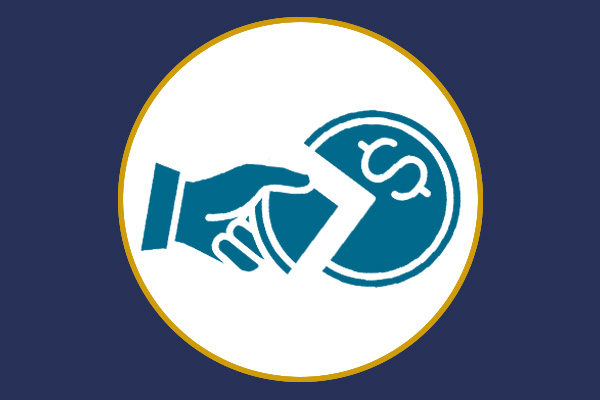Home >> Blog >> What is an Interest Coverage Ratio?
What is an Interest Coverage Ratio?

Table of Contents
Introduction
Interest is often the price paid while borrowing money or a loan. Interest in loans is not just an amount of money the creditors or banks wish to profit upon. It indicates how much money a creditor will ask you for when you pay back your debt and marks the overall financial well-being of the business they are investing in. The company's interest is important for both the lender and the borrower. Just as a bank requires your annual income to determine your loan eligibility, a creditor or an investor puts their money into a company by calculating its solvency to pay back their debt on time. To understand the relationship between the company's financial products and the interest upon which they pay their long-term loans, we use one simple formula, the Interest Coverage Ratio.
Financial advisors, business analysts, and investors use this formula to determine the ability of a company or a business to pay off the interest on the debt they are holding with ease. It acts as a solvency check which is the financial health of the business organization.
What is Interest Coverage Ratio(ICR)?
The debt service ratio and debt service coverage ratio are other names for the interest coverage ratio. It is computed by dividing the overall earnings, also known as EBIT (earnings before interest and taxes), which are payable by the firm to its lenders during the same time, by the interest costs owed by the company to its lenders.
In other words, the interest coverage ratio calculates how often a business can pay off all of its debt using operating income, or EBIT (earnings before interest and taxes). The Times Interest Earned Ratio is another name for the interest coverage ratio . One of the most crucial calculating techniques for an investor or business is the interest coverage ratio. It is a ratio that tells us how easily a company can pay the interest on its outstanding debt. It is a number that tells us about the total interest money on outstanding debts, which is the money the company is indebted to its debtors. It also indicates the amount of interest or profits the company earns itself. It helps us to manage financial risks and allows us to control or reduce the financial burden. Mostly the company with a good ratio is financially stable. A company with a high ratio thrives and can pull itself back when there is a major setback to the company.
By measuring this ratio, the investors, lenders, and stockholders determine how effectively the business or the company can clear off its interest payment due to its long-term debts. The ratio is significant to the company as well as to an outsider. For a company, it helps them to acknowledge their shortcomings and financial well-being. For an outsider, it helps to determine the business's strengths or weaknesses.
A good interest coverage ratio of a business is considered 1.5. A higher interest coverage ratio, in general, indicates that a business is making enough money to cover the Interest on its long-term loans. This means the chances of a financial default in the business are very low, and the company's financial well-being is stable.
Whereas a low-interest coverage ratio below 1 will indicate a higher debt burden and financial crisis for the company, which increases the chances of financial instability and even bankruptcy. Lenders often avoid loaning money to such businesses, and investors do not wish to sabotage their money.
Calculating Interest Coverage Ratio
The following formula can calculate the interest coverage ratio
Interest Coverage Ratio = Operating Income or EBIT / Interest Expenses
Where operating income or EBIT = Earnings before Interest and taxes
Interest Expenses = Interest payable on long-term loans
Here is an example of an Interest Coverage Ratio-
Company X. provide the following details from their accounting records
Net Profit after tax = 1,70,000
Tax= 30,000
Interest Expense on Long term funds- 50,000
To find the interest coverage ratio from the above-provided information, we must first find the EBIT.
EBIT = Total Profit after tax – tax
Therefore,
Now, EBIT = 1,70,000 - 30,000
= 1,40,000
Therefore,
Interest Coverage Ratio = EBIT / Interest Expenses
= 1,40,000 / 30,000
= 4.6
This indicates that Company X. can pay the Interest on the debt 4.6 times in an accounting year, which indicates that the company is financially stable to pay debt quarterly.
Times Interest Earned Ratio The time Interest earned ratio, also known as the interest coverage ratio, is used by lenders to assess the risk involved in their long-term loans in addition to helping to understand the organization's financial efficiency. The higher the ratio of TIE, the lower the risk of bankruptcy. Therefore, investors and lenders are interested in lending their money to those companies whose TIE ratio is higher because these companies are capable of paying their Interest for a long-term loan easily and efficiently.
The company's ICR assures the lenders of timely interest payments. Big companies have money borrowed from different sources and investors simultaneously. Lending institutions must therefore have the assurance that they will periodically receive payment, particularly Interest. Lenders determine whether or not to approve a loan for the business based on the interest coverage ratio. Suppose the ratio is not appropriate for their interest returns. In that case, the lender may change the amount of loan suitable to the company's interest ratio so that the company pays its debt within the decided period.
EBITDA & EBIT
EBIT (earnings before Interest and taxes) is an important factor in determining interest coverage ratio. . EBIT are of two forms —EBITDA- (Earnings Before Interest, Taxes, Depreciation, and Amortisation) and EBIT- (Earnings Before Interest After Taxes), which changes the interest coverage ratio accordingly.
When EBITDA is used instead of EBIT in the interest coverage ratio formula, it does not include depreciation and amortization, which makes the operating expenses or numerator greater than what it would have been in the case of EBIT. Therefore, the ratio will be much higher, whereas the interest expenses do not change, which is the denominator. As a result, the company's net profit is substantially increased by excluding the depreciation and amortization expenses.
On the other hand, when EBIAT (earnings before Interest after tax) is used instead of EBIT( earnings before Interest and tax), the numerator becomes much lower than the EBIT due to reducing the net profit due to tax expense deductions. Therefore, many lenders ask the company for their EBIAT as it offers a complete business portfolio. The interest comparison ratio is much more intensive and accurate in this case, where most expenses are included.
While the investors and lenders should be more than satisfied with an ICR above 2, some creditors wish to provide loans to companies with an ICR of 3. However, a ratio of 1 or less signifies the company's poor financial health, which won't allow itself to manage its short-term interest liabilities.
Conclusion
The interest coverage ratio helps the investors and the company in one way or another. For example, with the help of this ratio, the lenders learn about the financial productivity of the company and their ability and efficiency by calculating most of their expenses and profit to determine if they'll be able to pay the loan on time. So, the higher the ratio of the ICR, the easier it is for the company to manage its interest payments against multiple loans.
When the interest comparison ratio is high, the lenders are assured of their timely debt returns. For the companies, the interest comparison ratio helps them to understand their company's financial status and stability. If a company has a higher ratio, it'll strive to keep up its present efforts for the well-being of its financial health. On the other hand, a lower ratio will oblige them to make necessary changes to improve the company's productivity.
The ICR plays an important role in trend analysis. The company follows the trends of its ICR yearly or quarterly to interpret its growth or depreciation. With this, a company can understand how it performs with the help of past and present figures, predicting its future performance. As a result, companies get an opportunity to work and improve their future financial performance.
Author
Frequently Asked Questions
Interest Coverage Ratio determines the financial performance of a company which mainly sees if it can pay its debt timely to its creditors from its operating earnings.
The commonly used formula to calculate interest coverage ratio is - Interest Coverage Ratio = EBIT / Interest Expenses
where, EBIT is earnings before interest and taxes.
A good interest coverage ratio is at least 2. It is different for different industries. Some investors prefer an interest coverage ratio to be 3 and above.
An interest coverage ratio mainly depends on a company’s debt interests and earnings. Therefore, a company can focus on its earnings growth because the debt interest is fixed. A company can help its interest coverage ratio by increasing its operating income which greatly affects the overall ratio.
Yes, sometimes when a company’s financial performance is below average, it will show negative interest coverage ratio. Such companies often fail to meet their debt obligations.
















